Themed collection Biocatalysis: A cross-journal collection

Status check: biocatalysis; its use with and without chemocatalysis. How does the fine chemicals industry view this area?
Stages of the penetration of catalytic technology and the necessity for fruitful collaboration.

Green Chem., 2023,25, 6092-6107
https://doi.org/10.1039/D3GC01931D
Tuning properties of biocatalysis using protein cage architectures
The properties of biocatalysis can be tuned by encapsulation of enzymes inside protein cages, which alters enzyme behaviors, substrate access and product release, and efficiency of cascade reactions.
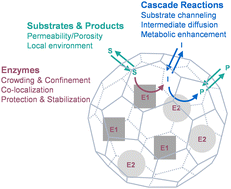
J. Mater. Chem. B, 2023,11, 3567-3578
https://doi.org/10.1039/D3TB00168G
Light-driven biocatalytic oxidation
Light-driven catalytic cycles by oxidative enzymes, such as peroxygenases, dehydrogenases or monooxygenases, perform a variety of selective oxyfunctionalization and dehydrogenation reactions with or withdrawal of reducing equivalents.

Chem. Sci., 2022,13, 12260-12279
https://doi.org/10.1039/D2SC03483B
Biocatalysis in ionic liquids: state-of-the-union
This perspective reviews the current status and prospects of biocatalysis in ionic liquids.
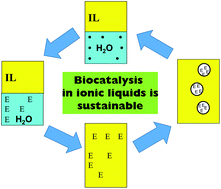
Green Chem., 2021,23, 8406-8427
https://doi.org/10.1039/D1GC03145G
Development of a continuous-flow system with immobilized biocatalysts towards sustainable bioprocessing
Implementing immobilized biocatalysts in continuous-flow systems can enable a sustainable process through enhanced enzyme stability, better transport and process continuity as well as simplified recycle and downstream processing.
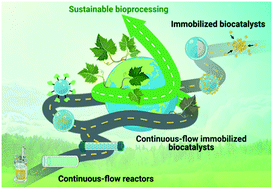
React. Chem. Eng., 2021,6, 1771-1790
https://doi.org/10.1039/D1RE00189B
Biosynthesis of chiral cyclic and heterocyclic alcohols via C![[double bond, length as m-dash]](https://www.rsc.org/images/entities/char_e001.gif) O/C–H/C–O asymmetric reactions
O/C–H/C–O asymmetric reactions
This review covers the recent progress in various biological approaches applied to the synthesis of enantiomerically pure cyclic and heterocyclic alcohols through C![[double bond, length as m-dash]](https://www.rsc.org/images/entities/char_e001.gif) O/C–H/C–O asymmetric reactions.
O/C–H/C–O asymmetric reactions.
![Graphical abstract: Biosynthesis of chiral cyclic and heterocyclic alcohols via C [[double bond, length as m-dash]] O/C–H/C–O asymmetric reactions](/en/Image/Get?imageInfo.ImageType=GA&imageInfo.ImageIdentifier.ManuscriptID=D1CY00113B&imageInfo.ImageIdentifier.Year=2021)
Catal. Sci. Technol., 2021,11, 2637-2651
https://doi.org/10.1039/D1CY00113B
Immobilisation and flow chemistry: tools for implementing biocatalysis
The application of immobilised enzymes in flow allows for process intensification, reduced reactor volumes and improved safety.
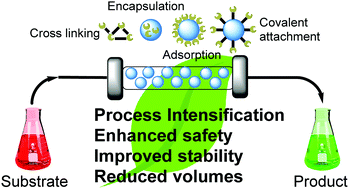
Chem. Commun., 2021,57, 11416-11428
https://doi.org/10.1039/D1CC04315C
Reactive oxygen nanobiocatalysts: activity-mechanism disclosures, catalytic center evolutions, and changing states
This review offers a comprehensive and timely summarization of the most recent breakthroughs and future trends in creating reactive oxygen nanobiocatalysts, which guides their broad applications in diverse biomedical and biological fields.
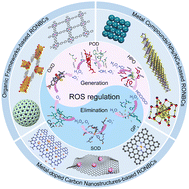
Chem. Soc. Rev., 2023,52, 6838-6881
https://doi.org/10.1039/D3CS00087G
Nucleic acid-functionalized nanozymes and their applications
Nucleic acid-modified nanozymes provide hybrid nanostructures that act as sensors, effective catalysts and bioreactor systems, DNA switches and catalysts for nano-biomedical applications.
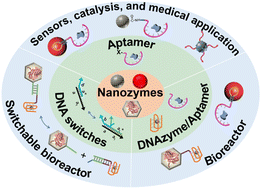
Nanoscale, 2023,15, 14301-14318
https://doi.org/10.1039/D3NR02345A
Microbial electrosynthesis: carbonaceous electrode materials for CO2 conversion
Microbial electrosynthesis (MES) is a sustainable approach to producing fuels and value-added chemicals from anthropogenic carbon dioxide (CO2).
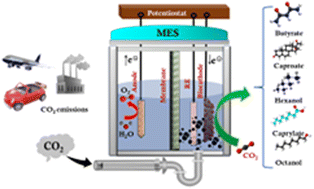
Mater. Horiz., 2023,10, 292-312
https://doi.org/10.1039/D2MH01178F
Biocatalytic conversion of sunlight and carbon dioxide to solar fuels and chemicals
Interfacing photocatalysts with microbes to produce solar fuels and chemicals from carbon dioxide and sunlight.
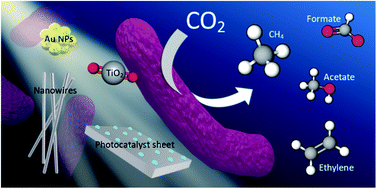
RSC Adv., 2022,12, 16396-16411
https://doi.org/10.1039/D2RA00673A
Biocatalysis making waves in organic chemistry
The many waves of biocatalysis have arisen to solve long-standing synthetic challenges. From industrially applied hydrolases to enzymes catalysing selective C–C-bond formation, biocatalysis enables new tools to access a plethora of compounds.

Chem. Soc. Rev., 2022,51, 594-627
https://doi.org/10.1039/D1CS00100K
Immobilized enzymes in inorganic hybrid nanoflowers for biocatalytic and biosensing applications
Immobilized enzymes in inorganic hybrid nanoflowers for biocatalytic and biosensing applications.
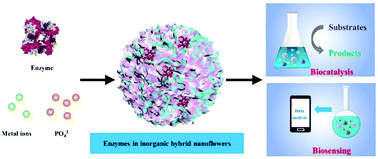
J. Mater. Chem. B, 2021,9, 7597-7607
https://doi.org/10.1039/D1TB01476E
The role of biocatalysis in the asymmetric synthesis of alkaloids – an update
This review article discusses developments in the chemo-enzymatic synthesis of alkaloids since 2013, showcasing how modern methods of organic synthesis and biocatalysis are combined to establish novel routes towards these important natural products.
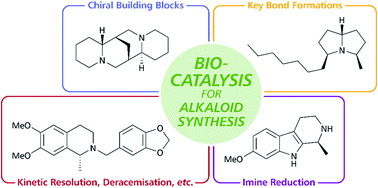
RSC Adv., 2021,11, 28223-28270
https://doi.org/10.1039/D1RA04181A
Recent trends in biocatalysis
Technological developments enable the discovery of novel enzymes, the advancement of enzyme cascade designs and pathway engineering, moving biocatalysis into an era of technology integration, intelligent manufacturing and enzymatic total synthesis.
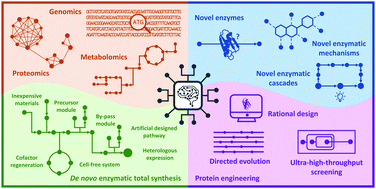
Chem. Soc. Rev., 2021,50, 8003-8049
https://doi.org/10.1039/D0CS01575J
Flow biocatalysis 101: design, development and applications
Flow biocatalysis: where to start? This tutorial review aims to guide and inspire new-comers to the field to boost the potential of flow biocatalysis.
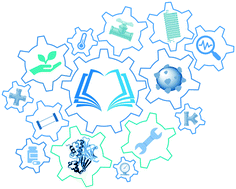
React. Chem. Eng., 2021,6, 599-611
https://doi.org/10.1039/D0RE00483A
Biocatalytic approaches for enantio and diastereoselective synthesis of chiral β-nitroalcohols
Chiral β-nitroalcohols are versatile synthetic intermediates for several pharmaceuticals, and bioactive molecules. This review describes the importance and various biocatalytic approaches for their enantio and diastereoselective synthesis.
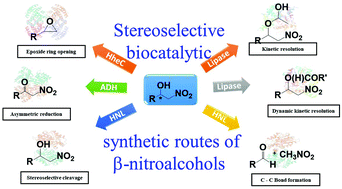
Org. Biomol. Chem., 2021,19, 322-337
https://doi.org/10.1039/D0OB02019B
Nanobiocatalysis: a materials science road to biocatalysis
This tutorial review highlights the recent achievements made in the field of nanobiocatalysis with emphasis on nano-integrated biocatalysis and bio-inspired nanocatalysis.
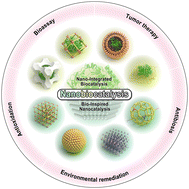
Chem. Soc. Rev., 2022,51, 6948-6964
https://doi.org/10.1039/D1CS01106E
New frontiers in enzyme immobilisation: robust biocatalysts for a circular bio-based economy
This tutorial review focuses on recent advances in technologies for enzyme immobilisation, enabling their cost-effective use in the bio-based economy and continuous processing in general.
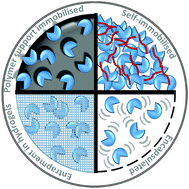
Chem. Soc. Rev., 2021,50, 5850-5862
https://doi.org/10.1039/D1CS00015B
Applied biocatalysis beyond just buffers – from aqueous to unconventional media. Options and guidelines
It's not only lipases which can be applied in alternative solvent systems to meet industrial and environmental demands. At the hand of case studies and flowcharts this review quickly shows what solvent systems are viable.
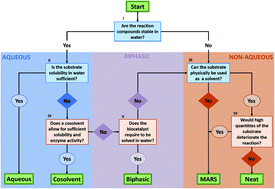
Green Chem., 2021,23, 3191-3206
https://doi.org/10.1039/D1GC00561H
Recent advances in the sustainable production of α,ω-C6 bifunctional compounds enabled by chemo-/biocatalysts
We review the recent progress of synthesis routes for four α,ω-C6 bifunctional compounds (6-hydroxyhexanoic acid, 6-aminocaproic acid, 1,6-hexanediol and 1,6-hexanediamine), focusing on routes involving sustainable catalysts or renewable feedstocks.

Green Chem., 2022,24, 4270-4303
https://doi.org/10.1039/D2GC00288D
Biocatalytic reduction of alkenes in micro-aqueous organic solvent catalysed by an immobilised ene reductase
Immobilised TsOYE on Celite carrier catalyses the bioreduction of activated alkenes in pure organic solvent, providing full conversion to (chiral) products.

Catal. Sci. Technol., 2023,13, 5530-5535
https://doi.org/10.1039/D3CY00541K
Comparative S-adenosyl-L-methionine analogue generation for selective biocatalytic Friedel-Crafts alkylation
Comparison of S-adenosyl-L-methionine (SAM) analogue generation by halide methyltransferase (HMT) and methionine adenosyltransferase (MAT) for methyltransferase catalysed alkylation.

Chem. Commun., 2023,59, 5463-5466
https://doi.org/10.1039/D3CC01036H
First and second sphere interactions accelerate non-native N-alkylation catalysis by the thermostable, methanol-tolerant B12-dependent enzyme MtaC
The corrinoid protein MtaC, which is natively involved in methyl transferase catalysis, catalyzes N-alkylation of aniline using ethyl diazoacetate.
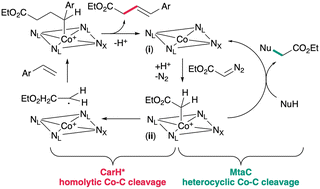
Chem. Commun., 2023,59, 4798-4801
https://doi.org/10.1039/D3CC01071F
A multienzyme biocatalytic cascade as a route towards the synthesis of α,ω-diamines from corresponding cycloalkanols
We report a multienzymatic cascade for the synthesis of 1,6-hexamethylenediamine (HMD) and related α,ω-diamines from corresponding cycloalkanols.

Green Chem., 2023,25, 543-549
https://doi.org/10.1039/D2GC03392E
Visible-light-driven production of fumarate from CO2 and pyruvate using a photocatalytic system with dual biocatalysts
The unsaturated dicarboxylate fumarate was produced from pyruvate and CO2 by applying malate dehydrogenase and fumarase as a catalyst for the visible-light driven regeneration of NADH for the first time.
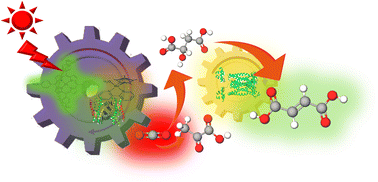
Sustainable Energy Fuels, 2023,7, 355-359
https://doi.org/10.1039/D2SE01533A
Catecholase-catalyzed synthesis of wedelolactone, a natural coumestan and its analogs
A green approach, catalyzed by the catecholase enzyme obtained from sweet potato, to generate bioactive wedelolactone and many of its analogs which are useful precursors for a variety of coumestan-based natural products.
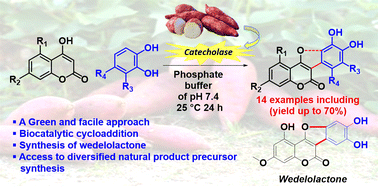
Org. Biomol. Chem., 2023,21, 89-92
https://doi.org/10.1039/D2OB02081E
Efficient O-demethylation of lignin monoaromatics using the peroxygenase activity of cytochrome P450 enzymes
Selective O-demethylation of the lignin monoaromatics, syringol and guaiacol, using the peroxygenase activity of two distinct cytochrome P450 enzymes.
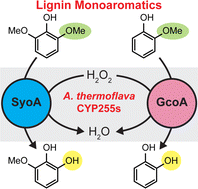
Chem. Commun., 2022,58, 13321-13324
https://doi.org/10.1039/D2CC04698A
Polymer-induced biofilms for enhanced biocatalysis
Here, we show how synthetic polymers, prepared by a combination of controlled radical polymerization and in-situ screening, can be used to address a biological challenge – how to improve biofilm formation – to provide solutions to a field – biocatalysis – of industrial and societal relevance.
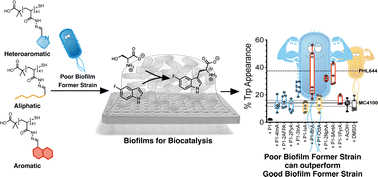
Mater. Horiz., 2022,9, 2592-2602
https://doi.org/10.1039/D2MH00607C
Biocatalytic fumarate synthesis from pyruvate and CO2 as a feedstock
The biocatalytic synthesis of fumarate from CO2 and pyruvate viaL-malate as an intermediate in an aqueous medium using a biocatalytic system consisting of malate dehydrogenase and fumarase in the presence of NADH is developed.
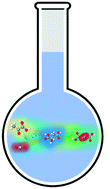
React. Chem. Eng., 2022,7, 1931-1935
https://doi.org/10.1039/D2RE00039C
A hydrogen-driven biocatalytic approach to recycling synthetic analogues of NAD(P)H
Soluble hydrogenase enables atom efficient, H2-driven, recycling of synthetic nicotinamide cofactors.
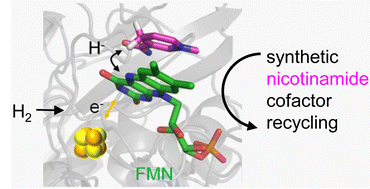
Chem. Commun., 2022,58, 10540-10543
https://doi.org/10.1039/D2CC02411J
Biocatalytic dynamic reductive kinetic resolution of aryl α-chloro β-keto esters: divergent, stereocontrolled synthesis of diltiazem, clentiazem, and siratiazem
A ketoreductase (KRED)-catalyzed dynamic reductive kinetic resolution strategy was developed for the highly stereoselective and green synthesis of anti-aryl α-chloro β-hydroxy esters.

Chem. Commun., 2022,58, 9010-9013
https://doi.org/10.1039/D2CC03102G
Biocatalytic CO2 fixation initiates selective oxidative cracking of 1-naphthol under ambient conditions
CO2 fixation initiates cracking: the enzymatic ortho-carboxylation activates the singly hydroxylated aromatic ring of naphthalene for the following selective cracking catalyzed by dioxygenase in a cofactor-free one-pot cascade reaction.

Green Chem., 2022,24, 4766-4771
https://doi.org/10.1039/D2GC01226J
A light-controlled biocatalytic system for precise regulation of enzymatic decarboxylation
A light-controlled biocatalytic one-pot system is developed, which enables precise regulation of gene expression and photocatalysis by illumination and yields high conversion and stereoselectivity.

Catal. Sci. Technol., 2022,12, 3421-3425
https://doi.org/10.1039/D2CY00480A
Multiple electron transfer pathways of tungsten-containing formate dehydrogenase in direct electron transfer-type bioelectrocatalysis
Multiple direct electron transfer pathways are discovered in Tungsten-containing formate dehydrogenase from the viewpoints of structural biology and bioelectrochemistry.

Chem. Commun., 2022,58, 6478-6481
https://doi.org/10.1039/D2CC01541B
Constructing a multienzyme cascade redox-neutral system for the synthesis of halogenated indoles
A novel multienzyme cascade redox-neutral system for the synthesis of halogenated indoles from amino alcohols.
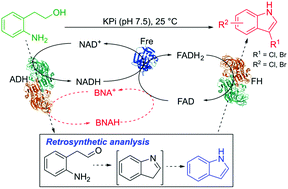
Chem. Commun., 2022,58, 6016-6019
https://doi.org/10.1039/D2CC00811D
One-pot biocatalytic synthesis of nylon monomers from cyclohexanol using Escherichia coli-based concurrent cascade consortia
We developed a multienzyme biocatalytic cascade with high atom efficiency and a self-sufficient redox network for the synthesis of nylon monomers without adding auxiliary enzymes to recycle cofactors.
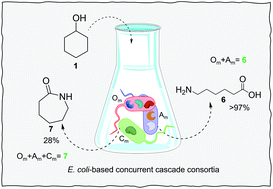
Green Chem., 2021,23, 9447-9453
https://doi.org/10.1039/D1GC03056F
Nanomicelle-enhanced, asymmetric ERED-catalyzed reductions of activated olefins. Applications to 1-pot chemo- and bio-catalysis sequences in water
Bio-catalytic reactions involving ene-reductases (EREDs) in tandem with chemo-catalysis in water can be greatly enhanced by the presence of nanomicelles derived from the surfactant TPGS-750-M.
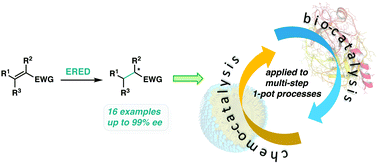
Chem. Commun., 2021,57, 11847-11850
https://doi.org/10.1039/D1CC04774D
Improved biocatalytic cascade conversion of CO2 to methanol by enzymes Co-immobilized in tailored siliceous mesostructured cellular foams
CO2 can be enzymatically reduced to methanol in a cascade reaction involving three enzymes: formate-, formaldehyde- and alcohol dehydrogenase (FateDH, FaldDH, ADH).

Catal. Sci. Technol., 2021,11, 6952-6959
https://doi.org/10.1039/D1CY01354H
A mild and chemoselective CALB biocatalysed synthesis of sulfoxides exploiting the dual role of AcOEt as solvent and reagent
Sulfoxides have been synthesised from various sulfide substrates under mild conditions exploiting CALB biocatalyst in the presence of urea hydrogen peroxide and AcOEt which acts with the dual role of solvent and reagent.
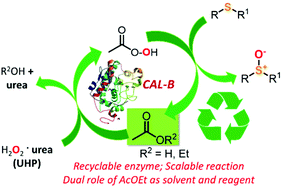
Org. Biomol. Chem., 2021,19, 156-161
https://doi.org/10.1039/D0OB01966F
Concise synthesis of (R)-reticuline and (+)-salutaridine by combining early-stage organic synthesis and late-stage biocatalysis
Designing an alternative access to the morphinan scaffold by taking advantage of biocatalysis for asymmetric C![[double bond, length as m-dash]](https://www.rsc.org/images/entities/char_e001.gif) N reduction and oxidative C–C bond formation.
N reduction and oxidative C–C bond formation.

Chem. Sci., 2023,14, 9863-9871
https://doi.org/10.1039/D3SC02304D
Biocatalytic cascades and intercommunicated biocatalytic cascades in microcapsule systems
Dynamic dimerization of GOx-loaded microcapsules with β-gal//hemin/G-quadruplex-bridged T1/T2-loaded microcapsules guides the bi-directional intercommunication of the three catalysts cascade.

Chem. Sci., 2022,13, 7437-7448
https://doi.org/10.1039/D2SC01542K
CO2-responsive Pickering emulsions stabilized by soft protein particles for interfacial biocatalysis
An unprecedented strategy was proposed for recycled interfacial biocatalysis in a CO2-responsive emulsion stabilized by soft protein particles. The recycled enzyme maintained its catalytic activity, with a conversion yield over 90% after 30 cycles.

Chem. Sci., 2022,13, 2884-2890
https://doi.org/10.1039/D1SC06146A
Engineering proteinaceous colloidosomes as enzyme carriers for efficient and recyclable Pickering interfacial biocatalysis
Engineering proteinaceous colloidosomes with magnetic-responsiveness are designed as both enzyme carrier and emulsifier, achieving a breakthrough in protein-based w/o Pickering interfacial biocatalysis.
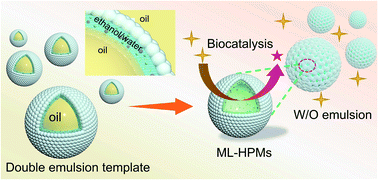
Chem. Sci., 2021,12, 12463-12467
https://doi.org/10.1039/D1SC03693A
A unified strategy to prostaglandins: chemoenzymatic total synthesis of cloprostenol, bimatoprost, PGF2α, fluprostenol, and travoprost guided by biocatalytic retrosynthesis
We report a unified chemoenzymatic asymmetric synthesis of five prostaglandins, featuring two enzymatic redox transformations and a copper(II)-catalyzed regioselective p-phenylbenzoylation.
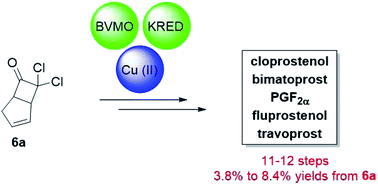
Chem. Sci., 2021,12, 10362-10370
https://doi.org/10.1039/D1SC03237B
Enzyme-modified amphiphilic polymer nanoparticles as high-performance Pickering interface biocatalysts
Enzyme-decorated polymeric nanoparticles as both catalytic sites and stabilizers for a high catalytic activity and easily recyclable Pickering interface biocatalysis system.
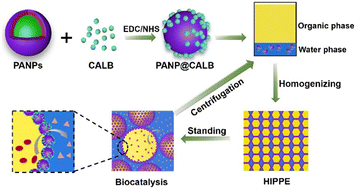
React. Chem. Eng., 2023,8, 3162-3170
https://doi.org/10.1039/D3RE00381G
Computational thermostability engineering of a nitrile hydratase using synergetic energy and correlated configuration for redesigning enzymes (SECURE) strategy
A computational strategy using synergetic energy and correlated configuration for redesigning enzymes (SECURE) is proposed for the thermostability engineering of multimeric proteins.
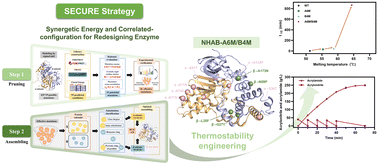
Catal. Sci. Technol., 2023,13, 5880-5891
https://doi.org/10.1039/D3CY01102J
FTIR microscopy for direct observation of conformational changes on immobilized ω-transaminase: effect of water activity and organic solvent on biocatalyst performance
Enzyme immobilization is a key strategy to expand the scope of enzyme applications and to enable the recycling of biocatalysts, resulting in greener and more cost-efficient processes.
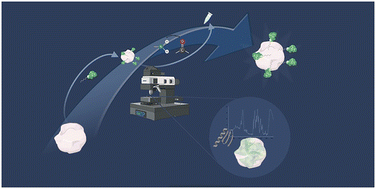
Catal. Sci. Technol., 2023,13, 4955-4967
https://doi.org/10.1039/D2CY01949C
Magnetic separation of immobilized biocatalyst enables continuous manufacturing with a solids-forming reaction
A new application of magnetic separation suitable for micron-scale solid–solid separation is designed and demonstrated on a pilot plant scale synthesis of amoxicillin trihydrate.

React. Chem. Eng., 2023,8, 2323-2331
https://doi.org/10.1039/D3RE00214D
Efficient biosynthesis of 5-aminolevulinic acid from glutamate via whole-cell biocatalyst in immobilized engineered Escherichia coli
Development of a whole-cell catalysis system for an efficient conversion of glutamate to 5-aminolevulinic acid.

Catal. Sci. Technol., 2023,13, 2810-2819
https://doi.org/10.1039/D2CY02172B
Biocatalytic asymmetric reduction of fluoroalkyl ketones to access enantiopure fluoroalkyl secondary alcohols
An efficient biocatalytic reduction of difluoromethylene group-containing ketones with commercial ketoreductase K234 was reported to access chiral difluoromethylene-containing secondary alcohols with excellent yields and high enantioselectivity.

Org. Biomol. Chem., 2023,21, 3623-3627
https://doi.org/10.1039/D3OB00193H
A robust and efficient lipase based nanobiocatalyst for phenothiazinyl-ethanol resolution
A new robust, active and selective biocatalyst, prepared by CaL-B entrapment into polyvinyl alcohol–chitosan nanofibers, proved to be efficient for the EKR of nine racemic phenothiazinyl-ethanols, important chiral building blocks.
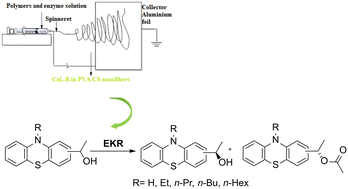
React. Chem. Eng., 2023,8, 1109-1116
https://doi.org/10.1039/D2RE00515H
Synthetic engineering of a new biocatalyst encapsulating [NiFe]-hydrogenases for enhanced hydrogen production
By incorporating [NiFe]-hydrogenases into a proteinaceous carboxysome shell, we generate a novel biocatalyst that has improved production of clean hydrogen, oxygen tolerance, and thermostability, highlighting its great potential in biotechnological applications.
![Graphical abstract: Synthetic engineering of a new biocatalyst encapsulating [NiFe]-hydrogenases for enhanced hydrogen production](/en/Image/Get?imageInfo.ImageType=GA&imageInfo.ImageIdentifier.ManuscriptID=D2TB02781J&imageInfo.ImageIdentifier.Year=2023)
J. Mater. Chem. B, 2023,11, 2684-2692
https://doi.org/10.1039/D2TB02781J
Modulation of the biocatalytic activity and selectivity of CeO2 nanozymes via atomic doping engineering
Mn- and Co-doped CeO2 nanozymes were developed via atomic engineering to achieve enhanced enzymatic activity and modulation of catalytic selectivity, which could protect cells from LPS- or H2O2-induced oxidative damage by scavenging free radicals.
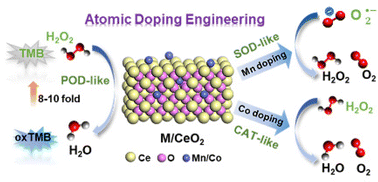
Nanoscale, 2023,15, 4408-4419
https://doi.org/10.1039/D2NR05742E
Bioconversion of spent coffee grounds to prebiotic mannooligosaccharides – an example of biocatalysis in biorefinery
Spent coffee grounds can be bioconverted via Man26A to prebiotic mannooligosaccharides; this is an example of biocatalysis in the biorefinery.

RSC Adv., 2023,13, 3773-3780
https://doi.org/10.1039/D2RA07605E
Utilizing biocatalysis and a sulfolane-mediated reductive acetal opening to access nemtabrutinib from cyrene
The development of a protecting group-free, 2-step synthesis of 5-amino-2-hydroxymethyltetrahydropyran 1a from biorenewable Cyrene™ is described which renders access to BTK-inhibitor nemtabrutinib (2) more efficient and sustainable.
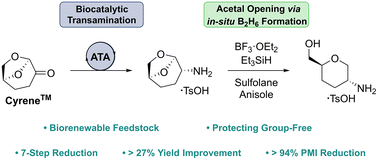
Green Chem., 2023,25, 606-613
https://doi.org/10.1039/D2GC04117K
Expression of biocatalysts and their use in monomer synthesis for biodegradable polymers from acetone and CO2
One-pot β-hydroxybutyrate synthesis from CO2 and acetone in an aqueous solution with acetone carboxylase and β-hydroxybutyrate dehydrogenase extracted from Rhodobacter capsulatus SB1003 by culturing in an acetone–bicarbonate medium was developed.

Sustainable Energy Fuels, 2023,7, 360-368
https://doi.org/10.1039/D2SE01150F
Biocatalytic approach to chiral fluoroaromatic scaffolds
New insights into the general efficacy of halohydrin dehalogenase for the synthesis of fluorinated chiral building blocks using biocatalytic and computational approaches.
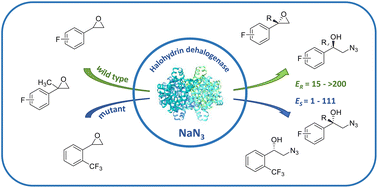
Org. Biomol. Chem., 2022,20, 9734-9741
https://doi.org/10.1039/D2OB01955H
Towards understanding oxygen heterocycle-forming biocatalysts: a selectivity study of the pyran synthase PedPS7
The specificity profile of the intramolecular oxa-Michael addition (IMOMA)-catalysing cyclase PedPS7 is presented. It uncovers broad substrate tolerance and high stereoselectivity of the enzyme and suggests principle differences between various subtypes of IMOMA cyclases.

Org. Biomol. Chem., 2022,20, 9645-9649
https://doi.org/10.1039/D2OB02064E
The versatility of non-heme diiron monooxygenase PmlABCDEF: a single biocatalyst for a plethora of oxygenation reactions
Whole cells of Pseudomonas putida KT2440 producing multicomponent non-heme diiron monooxygenase PmlABCDEF transforms a vast variety of compounds into different oxy-derivatives, in certain cases with high regio- or enantioselectivity.
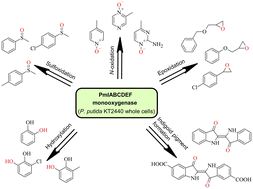
Catal. Sci. Technol., 2022,12, 7293-7307
https://doi.org/10.1039/D2CY01167K
Insights into the molecular mechanism of a new efficient whole-cell biocatalyst Enterobacter ludwigii YYP3 in 5-hydroxymethylfurfural reduction
A new whole-cell biocatalyst E. ludwigii YYP3 was applied in the conversion of HMF to BHMF and exhibited outstanding catalytic efficiency and cycling stability. Its underlying molecular mechanism, especially the target enzymes responsible for HMF reduction, was revealed.
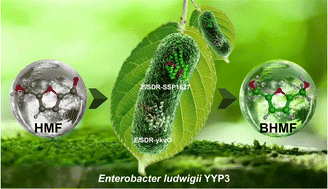
Green Chem., 2022,24, 8691-8704
https://doi.org/10.1039/D2GC01967A
Magnetic cross-linked enzyme aggregate based on ionic liquid modification as a novel immobilized biocatalyst for phytosterol esterification
Novel immobilized enzyme CRL-FIL-CLEAs@Fe3O4 with enhanced activities and stabilities was successfully prepared by a cross-linked lipase aggregate method for phytosterol esterification.
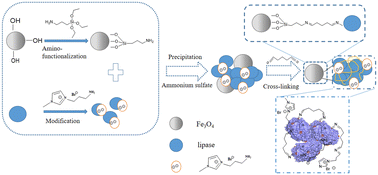
Catal. Sci. Technol., 2022,12, 6405-6415
https://doi.org/10.1039/D2CY00882C
Continuous oxyfunctionalizations catalyzed by unspecific peroxygenase
Unspecific peroxygenase (UPO) has been shown to be a promising biocatalyst for oxyfunctionalization of a broad range of substrates with hydrogen peroxide (H2O2) as the cosubstrate.
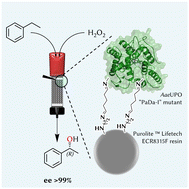
Catal. Sci. Technol., 2022,12, 6473-6485
https://doi.org/10.1039/D2CY00650B
Impact of aqueous micellar media on biocatalytic transformations involving transaminase (ATA); applications to chemoenzymatic catalysis
Surfactant-enabled asymmetric ATA-catalyzed reductive aminations in aqueous buffered media are described, representative of the enhanced levels of conversion made possible by the presence of a nonionic surfactant in the water, thereby enabling 1-pot chemoenzymatic catalysis.
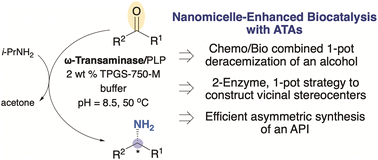
Green Chem., 2022,24, 6172-6178
https://doi.org/10.1039/D2GC02002E
Chemoenzymatic deracemization of lisofylline catalyzed by a (laccase/TEMPO)-alcohol dehydrogenase system
This article reports on a novel biocatalytic method for the synthesis of both enantiomers of lisofylline based on Trametes versicolor laccase, TEMPO as a redox mediator and stereocomplementary recombinant alcohol dehydrogenases as biocatalysts.

Catal. Sci. Technol., 2022,12, 4312-4324
https://doi.org/10.1039/D2CY00145D
Rational design of a graphitic carbon nitride catalytic–biocatalytic system as a photocatalytic platform for solar fine chemical production from CO2
We report that generating (formic acid) and regenerating (NADH/NADPH) from CO2 and NAD+/NADP+ using a nitrogen-rich polymeric carbon nitride catalytic–biocatalytic system under solar light (λ > 420 nm) could provide a new approach for storage of clean energy.
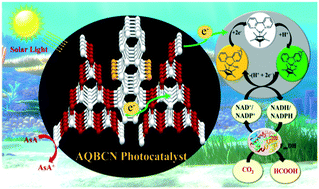
React. Chem. Eng., 2022,7, 1566-1572
https://doi.org/10.1039/D2RE00079B
Heparosan oligosaccharide synthesis using engineered single-function glycosyltransferases
A 24-fold increase in GlcNAc-transferase ability through KfiA screening and engineering. An approach for heparosan oligosaccharide synthesis relying on single-function glycosyltransferases.
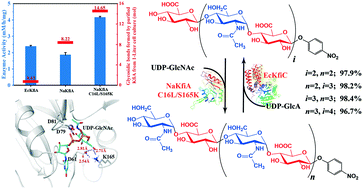
Catal. Sci. Technol., 2022,12, 3793-3803
https://doi.org/10.1039/D1CY02061G
Enhancement of thermal stability of proteinase K by biocompatible cholinium-based ionic liquids
The anions of cholinium-based IL molecules interact with the protein through hydrogen bonding and other interactions, causing great influence on the thermal stability and enzymatic activity of proteinase K.

Phys. Chem. Chem. Phys., 2022,24, 13057-13065
https://doi.org/10.1039/D1CP04782E
Data-rich process development of immobilized biocatalysts in flow
The authors describe an automated, data-rich screening and process development method for rapid discovery, development, and optimization of immobilized enzymes, critical to many biocatalytic processes.
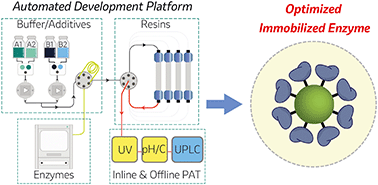
React. Chem. Eng., 2022,7, 866-876
https://doi.org/10.1039/D1RE00298H
A facile approach for hierarchical architectures of an enzyme–metal–organic framework biocatalyst with high activity and stability
Enzyme-incorporated composites with hierarchical porous structures can lead to improved performance of hybrid biocatalysts.

Nanoscale, 2022,14, 3929-3934
https://doi.org/10.1039/D1NR07826G
About this collection
Reducing the environmental impact of chemical synthesis while preserving the essential properties of the products to be synthesized is a key driver of innovation in the chemical sciences. Biocatalysis has become a mature technology that can complement existing catalytic approaches to improve the sustainability of chemical synthesis. By harnessing the catalytic activity and intrinsic selectivity of enzymes, a variety of molecules can be obtained, ranging from small building blocks to highly functionalized compounds, all under mild reaction conditions.
To establish biocatalysis as a key methodology in synthesis, researchers are investigating the chemical properties (stereoselectivity, substrate acceptance, and catalytic performance), physical properties (stability), and compatibility of enzymes with other synthetic steps and process conditions.
Research in these areas has led to significant advances in protein engineering, cascade design, and process engineering, while recent breakthroughs in artificial intelligence have made in silico prediction of protein structures accessible to everyone.
This cross-RSC collection brings together work from across biocatalysis research, highlighting recent advances and future prospects for this growing area.